First Ride: Salsa's New Spearfish and Horsethief
The two 29" wheeled bikes that have been revamped in Salsa's line up are the 120mm Horsethief (pictured above) and the 100mm travel Spearfish (pictured below).
Both of these names have been in their catalog for a few generations now but the latest iterations have a number of updates that make them relevant to a large number of mountain bikers. Geometries are updated and now include a flip-chip, suspension is said to be improved, and parts specs are catered to modern trails and more aggressive riding.
Salsa Spearfish Details
• Intended use: Aggressive XC
• Wheel size: 29"
• Rear-wheel travel: 100mm
• Boost 12x157 spacing
• 1x specific
• Carbon frame (aluminum option too)
• Double 24oz bottle mount
• Size: S through XL
• Price: $2,399 - $5,199 USD (aluminum and carbon models, carbon frame only: 2,999)
• Available now
• www.salsacycles.com
The Spearfish is the shortest travel bike in this group, and it falls nicely into the current crop of progressive XC rigs. The frame has 100mm of rear-wheel travel and is coupled with a 120mm fork. There is room for two water bottles and a tool kit on all sizes. There are also bolts on the top tube for a bag or whatever else you want to fasten and keep within reach.
Salsa Horsethief Details
• Intended use: Trail
• Wheel size: 29"
• Rear-wheel travel: 120mm
• Boost 12x157 spacing
• 1x specific
• Carbon frame (aluminum option too)
• Double 24oz water bottle mount
• Size: S through XL
• Price: $2,399 - $5,199 USD (aluminum and carbon models, carbon frame only: 2,999)
• Available now
• www.salsacycles.com
The Horsethief is Salsa's 120mm travel trail bike. With a 67-degree head tube angle and 140mm of travel up front, the bike is geared to be a versatile all-arounder. Like the Spearfish, it's available in a variety of spec, starting at $2,399 USD and topping out at $5,199 USD for now. The bike has a stout parts spec that includes wide bars, a short stem, dropper post, and Minion tires that make it capable and versatile while also being durable.
A Brief History of Salsa
Salsa was initially based in California but was purchased by distributor Quality Bicycle Products (QBP), based in Bloomington, Minnesota, and brought on as one of their several in-house brands. Back then, Salsa's role then was filling some gaps in supply that QBP had, more than anything else.
According to the team at Salsa, there initially wasn't a strong vision with the purchase, although the potential was there. Salsa was producing what seemed to be anything and everything - sunglasses and headbands to sports bras and tri-bikes, and the brand eventually lost direction and purpose.
Jason Bouchier came on board and took on the Salsa project. In 2009, the brand re-launched with a new vision that catered to the ever-growing gravel and endurance racing segment with the tagline, "Adventure by Bike." Since that time, it's been a slow but steady and methodical process of re-building and re-imagining itself. Salsa has established itself as one of the leaders in the whole gravel and fat biking scene, especially with its midwest roots. With that segment figured out, it was time to move more aggressively into the mountain bike world. While Salsa had a few off-road rigs, they had a lot of room for improvement. Until more recently, that just wasn't a priority. As Joe Mieser, Salsa's Product Manager said, "It's funny we all do mountain bike a lot, it's what we do...we're mountain bikers, but we participate in these other activities as well."
Salsa had some of the earlier 29'ers, and even a 120mm model before that was much of a thing. They were just a bit before they became popular. There was the Mariachi and the Dos Niner, two, at the time, progressive bikes. But time went on and with Salsa's focus on the gravel, fat, endurance segment of the sport, those bikes became dated.
Salsa developed the first generation of the Spearfish and Horsethief. At the time, they were standard single pivot bikes with flex stays; nothing that exciting. They sold but apparently not really that well as the sales manager for Salsa at that time approached the design team and challenged them to make a more sophisticated product to help sell more bikes.
With that, the design team went to the drawing boards and discussed how they were going to not only make a good suspension system, but do so while navigating the complex landscape of there being a lot of patents on suspension. As Meiser said, "we had to decide whether we could make something useful that works well or did we just need to license a platform?"
With that, the design team went to the drawing boards and discussed how they were going to not only make a good suspension system, but do so while navigating the complex landscape of there being a lot of patents on suspension. As Meiser said, "we had to decide whether we could make something useful that works well or did we just need to license a platform?"
The team saw that there was a gap in the US market for "Split Pivot". Devinci was using it in Canada but no one was in the US and it would work well with what they wanted to develop. So in 2014, the second generation of suspension bikes, and the first generation of Split Pivot bikes were launched by Salsa.
Split Pivot Explained
So what exactly is Split Pivot? It may be a little misunderstood so let's look at how it differs from a single pivot.
With a single pivot bike, the wheel and brake are attached to the same member which is then attached directly to the main triangle. Whenever you tune that linkage, you have to tune it for pedaling, coasting, and braking. A lot of times, what's good for pedaling isn't great for braking and vice versa and there's usually going to be a compromise. When you set it up for pedaling, the suspension will firm up and you're going to lose a lot of travel and have poor traction while braking. If it's set up for braking then it's not going to have as much support for pedaling and you'll get a lot of bob, etc. There are ways to mediate this but that's the basic "how it works."
With the Split Pivot design, things are, well, split apart. The chainstay, the single pivot portion of the suspension, carries the wheel and handles all of the pedaling. The brake is attached to the seatstay and there's a pivot there - the seatstay is a floating link. From a pedaling standpoint, it is indeed a single pivot but the braking is said to be isolated from it, therefore it's taken out of the equation when it comes to tuning and the braking and pedaling can be tuned independently of each other. So, it's like a single pivot but only half of it.
Where Split Pivot really sets itself apart, according to the team at Salsa, is the ability to tune braking. They can tune the anti-rise so that the active braking isn't using much of the suspension travel and they can also change the pitch of the curve so the braking is consistent throughout the travel.
Why Super Boost?
Salsa's history has a lot of different axle widths, especially with fat bikes. 170 and 197mm rear ends are the standards in that world and the three factors they always found themselves dealing with were tire fit, chainstay length, and drivetrain compatibility. In looking at the new bikes, according to Pete Kosky, Salsa's Product Development Engineer, they knew they wanted to shorten up the back ends but also fit a larger volume tire, at least a 2.6'' because in some of the situations they and their riders find themselves in - adventure riding, bikepacking, etc. the big volume and additional amounts of mud clearance are necessary. "We wanted to have all three but it's difficult to impossible to do with 148mm. With Super Boost, we could have all three."
Aside from the technical aspects, the team wanted to ensure they could build the bikes with Super Boost and stay under $2,400, so they worked with manufacturers to ensure that the products would be available to do that and also communicated with other brands. They didn't want to design anything that was unstable or a trend.
Apparently, according to Meiser, Salsa had been wanting to go with 157mm for some time, even with the previous generation of bikes, but 148 became popular right when those bikes were slated to be released so they had to go with that standard. As Meiser said, "I wish boost had never existed." With 157mm, they are able to reduce the back end by 5mm more, add 1/4" of tire clearance, and run normal size chainrings. There's a normal Q factor, better drivetrain fit, and a stiffer rear end and wheel. The team at Salsa strongly believe that for 29" tires, this is the only way to go.
For those worried about crankset compatibility, the Spearfish and Horsethief framesets will ship with a crankset.
Frame Details
According to Meiser, "It's important to us that the bikes are modern and progressive, cliche as that sounds, and how it says everything and nothing at the same time. We know it's important that we're balancing all of the design factors together. Trails are built differently than even a few years ago, bikes are being ridden hard. All of this is pushing the design of bikes to be different. We wanted to have a good all-around mountain bike. This is not an EWS bike and right now, the rider looking for an EWS bike isn't looking to Salsa...although we would love to get there one day."
I think this is one of the more practical and reasonable stances a bike brand could take. Kudos.
As far as spec goes, these bikes are both in the lower half of travel classes and Salsa wanted them to be good all around rigs. They wanted them to handle well everywhere and they didn't want to design a bike for just one place. For spec, they included appropriate tires. The Horsethief has a DHF/DHR combo while the Spearfish has a Forekaster/Ikon set up and the folks at Salsa have apparently been running DHF/DHR's on both bikes, but they know that may not appeal to the most common buyer of the Spearfish.
There are also wider handlebars, dropper posts, and mounts for two bottles and a tool kit on each bike.
Geometry and Kinematics
There are quite a few updates from the last generation to this one on both the Spearfish and Horsethief. Both bikes ride far different from their predecessor and a lot of that is due to the updates in the geometry and how the suspension works.
There are longer front centers, shorter stems, and slacker angles overall. One thing that stands out on the geometry as not quite so progressive is the seat angle. A lot of brands are trending steeper and steeper but Salsa believes that it's a fine balance and opted to stay more conservative citing that the steeper the seat angle, the further out it's going to push the front end. Also, with their suspension design, the bikes pedal higher in their travel which keeps you more forward.
The new bikes have a lower starting leverage ratio to allow riders to run a lower air pressure in the shock. There's more progression at the end of the stroke as well. Justin Steiner, Salsa's Brand Manager, says, "Riders are charging harder and there's an expectation that your 100-120mm bikes are still there for you when things get spicy." The geometry and suspension updates reflect that.
The other big update that makes this bike more modern from the previous generation is that it's 1x only. It's better optimized around that drivetrain and that gave more room for the team to work on the suspension and tire clearance.
First Ride Impressions
Author Info:
Must Read This Week
Sign Up for the Pinkbike Newsletter - All the Biggest, Most Interesting Stories in your Inbox
PB Newsletter Signup
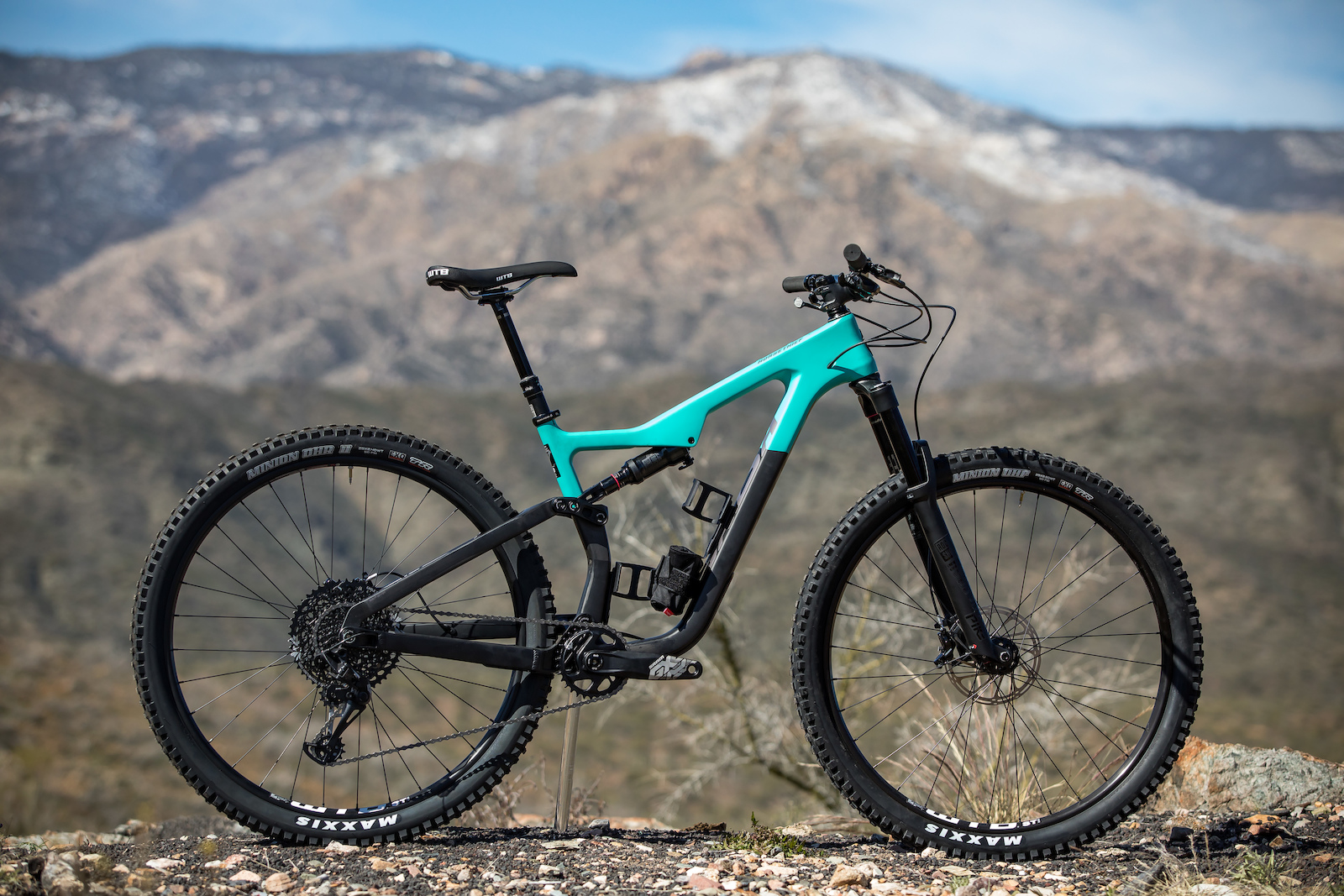
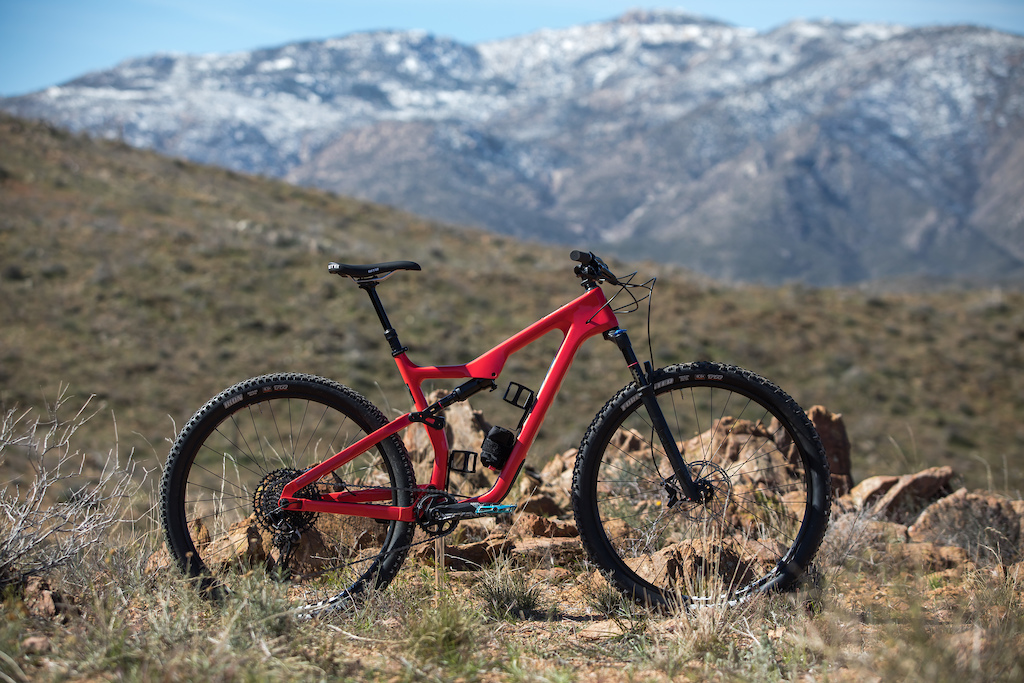
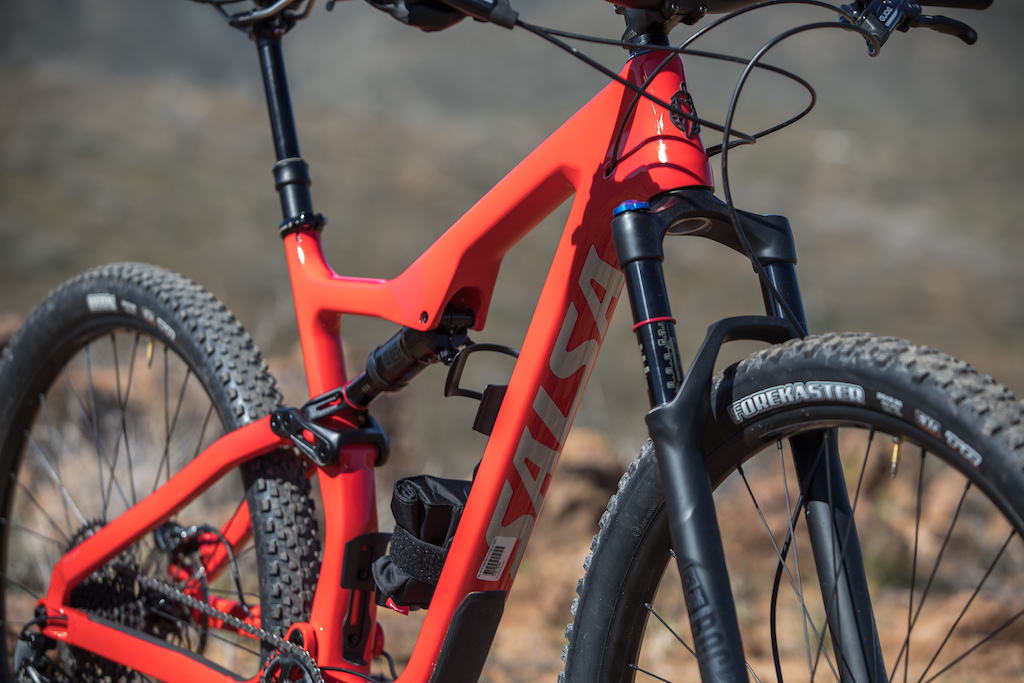

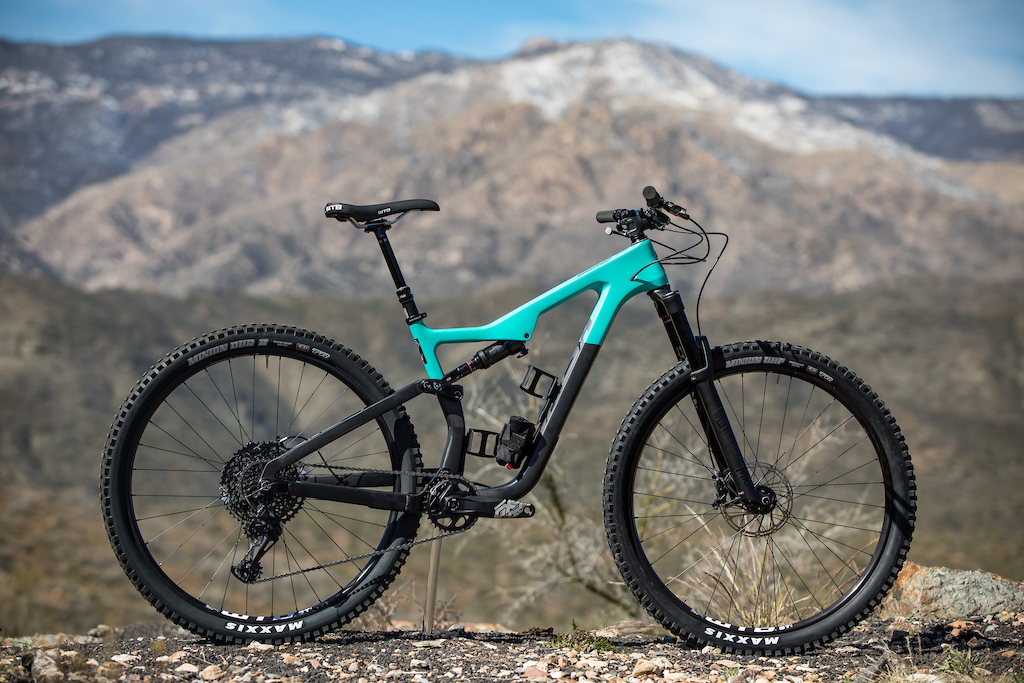






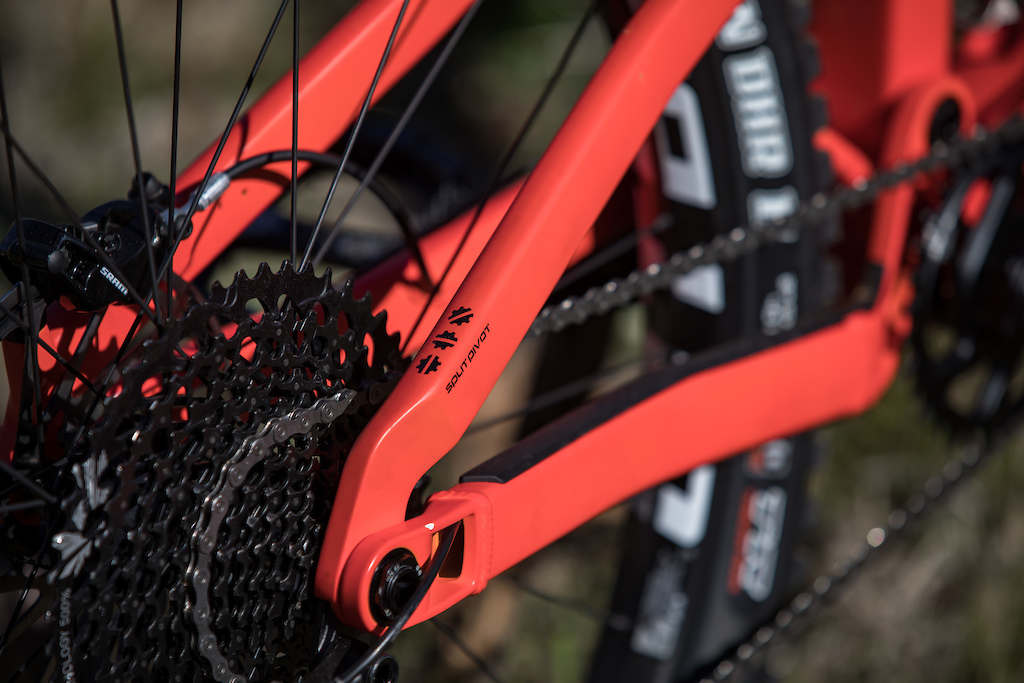



 Member since Jan 18, 2007
Member since Jan 18, 2007
To put it simple, boost is a scam and Trek along Sram deserve all the sht being thrown at then for creating it.
Just looks like a fun bike catering to your avg trail rider trying to have a good time. Good looks.. the only negative I can point out now is a questionable seat tube angle, and depending on how you look at it, the superboost situation - which I would argue is a benefit.
I imagine the 120/100 bike will ride not too indifferently to the Rocky Mountain Element - a very overlooked XC/Marathon/Trail bike. 'cept the Salsa outdoes Rocky with that top top bottle / toolbox mount...
Their frames should not cost what DW Link frames cost plain and simple.
From when he got the patent:
What is Split Pivot?
Split Pivot is Weagle’s answer to a call for a suspension system that is simpler to design and produce that his acclaimed DW-Link design, but still offers comparable performance.
The appeal of the design to manufacturers and consumers is that the design is less reliant on tight tolerances and machining spec, which in the end means a mechanically robust high-performance system that costs less.
We do have one of the bikes coming for a full review so stay tuned for that in a few months!
Now make something like the Stumpy EVO = what everybody "wants"!!
(even though it's mostly wasted potential for the likes of me)
Someone need to do it!
maybe it's just me --- I stopped using water bottles with MTB's back in the 90's. hydration packs for me
Why can’t they make a full carbon rear end on these bikes?
Hump
Read between the lines. If you buy anything not 157 spacing you are throwing money away. 148mm is going to be deader than 26 inch wheels. Don’t be fooled by sales and what shops say. If Salsa isn’t doing 148 anymore, it’s obsolete.
Kind of like how 27.5 shouldn’t have existed....
Mountain bikers really are a bunch of suckers.
and even if 148 doesn't stick around, there are boost adapters for pretty much every kind of wheel out there.
What next? Extra-Super-Boost followed by the Extra-Super-Boost-Plus 159.69mm two years later?
f*ck those 'standards'!
I hate Super Boost.
Ibis Ripmo, Specialized Stumpjumper, Fezzari La Sal, Trek Slash all have chainstays 435 or less and all clear up to a 29x2.6 tire just like these Salsas.